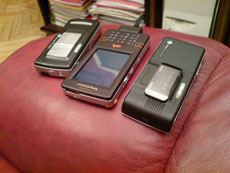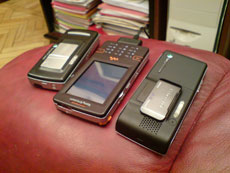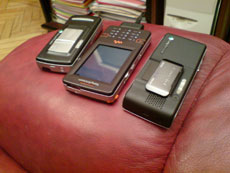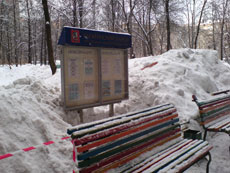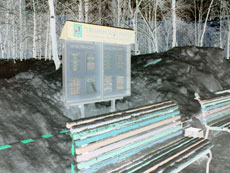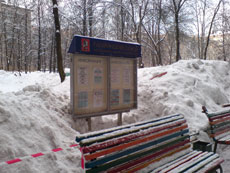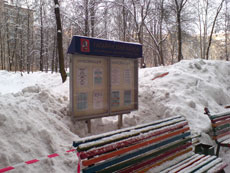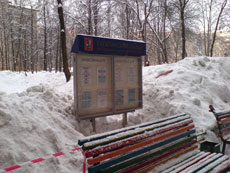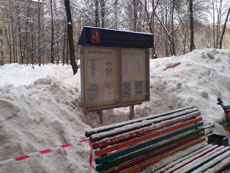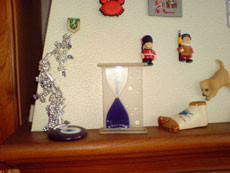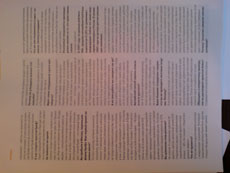|
|
Review of GSM(UMTS) phones Sony Ericsson K790/K800 Part 3: Photographic
Official
Photos>>>
Live Photos>>>
Review
of GSM(UMTS)-handsets Sony Ericsson K790/K800 Ц Part One>>>
Review
of GSM(UMTS)-handsets Sony Ericsson K790/K800 Ц Part two: design,
display and technologies>>>
Review
of GSM(UMTS) phones Sony Ericsson K790/K800 Part 3: Photographic>>>
Review
of GSM(UMTS) phones Sony Ericsson K790/K800 Part 4, or WhatТs new
in interface?>>>
Review of
GSM(UMTS)-handsets Sony Ericsson K790/K800 Ц Fifth Part, the conclusion
Interface and all standard functions>>>
A lot of people perceive Sony Ericsson K750i exceptionally as handset with great photo camera and forget about its other great possibilities. This happened without companyТs advertising campaign rolling at full power, that would tell the consumers about whole potential of technologies inside this model. Imagine what madness would begin when other manufactuerers will try to replicate the same amount of technologies used in Sony Ericsson K800/K790. Several technologies considered for rough marketing and do not fully match their supposed functions in reality. This became a common place when cameras came into mobile phoneТs cases, there arenТt differences between the manufacturers. LetТs look at K800Тs cameraТs possibilities step by step, and in the end everyone will be able to make his own conclusion.
Shutter blind is located on the back side, mirror and IR-backlight are nearby. The shutter blind is made of glossy plastic stylized to metal, prints from hands soil the surface easily, but itТs not that noticeable to be worried about. The shutter blind is fixed in farthest withdrawn positions thatТs why accidental opening while the phone is in ones pocket is highly unlikable, though not impossible to happen. When the shutter blind is open, cameraТs interface gets activated automatically, just like in previous models it is horizontally-oriented. This means that in order to use it comfortably you will have to hold the phone as if you are holding the camera instead.

CameraТs module is 3.2mpx, it is made by CMOS-technology. Only 4 resolutions are supported Ц 3MP, 2MP, 1MP, VGA. The phone does not show the actual physical resolution of the shot, only such abbreviations. The information about the resolution of the photo can be acquired while you are in the viewing mode of it, just access the context menu. The resolutions are as follows: 2048x1536, 1632x1224, 1280x960, 640x480 pixels. The phoneТs processor works quite fast, thatТs why you can safely choose high resolutions even for photos to be stored for contacts.
A big reason why the photos look nicely on the display is its quality, in this term the model is similar to top models from Nokia. The resolution does not affect the way how the photo is displayed on the screen, so it is possible to use both minimal or maximal resolution depending on your needs, the quality remains approximately the same.
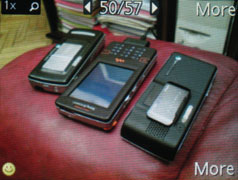
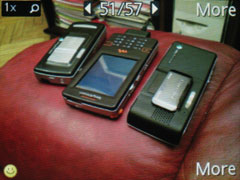
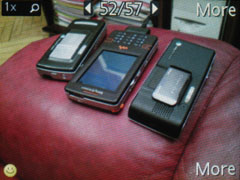

You can select the quality of photos from two options: Normal and Fine, a big list of settings is not supposed to be available here. The difference between Normal and Fine photos taken in maximal resolution is approximately 150-200kb, for example, if a photo is taken in Normal mode it will take around 400-500kb of space, meanwhile Fine quality will increase the sze up to 700-750kb.
Manufacturer speaks about the presence of Autofocus in this model. The phoneТs camera is predefined to work in three different intervals, as a result of matrixТs size and physical limitations for dotТs size. The module has three depths of fileds from 6cm to 40cm, from 40cm to 1m and from 1m to infinity. ItТs interesting to notice that corresponding camera focus settings suit the descriptions Ц Macro (shortest distance, equivalent to supermacro in digital cameras), normal mode, where autofocus is active. Autoforus can work by central point, as well as by multiple metering. Its main mission is to exarticulate main objects from panorama and define its distance from the camera. Depending on the distance corresponding settings get activated automatically. Macro mode brought as separate setting is nothing but a tribute to fashion, you can use normal mode and get same type of shots, autofocus is good at handling correct distance from the camera to the object, camera focuses on it. This means that autofocus and additional settings for it give the user enough flexibility of usage, but for most times automatic settings will be enough. There are three modes Ц Macro, Infinity and Automatic. You cannot disable autofocus (it gets blocked automatically in some shooting modes, for example in one called Document, this module becomes inactive).
Unfortunately we were unable to find moduleТs specifications, thatТs why we had to make an experiment. We took a digital camera with known lens specifications, took pictures of test tables. From the same location photos were made by Sony Ericsson K800. Rough analyze of the photo gave us effective focus distance which is 35mm (its known that for lens f=5.1 mm, 1:2.8). From elementary proportion we will find out that the length of shot side x/36=5,1/35$ x=5,2 mm. The most similar matrix has ?,7Ф diagonal and physical size 5,27 x 3,96 mm. Such matrix used to be placed in most simple digital cameras. Further matrix parameters calculation was a matter of time, we decided to use this wonderful calculator which is specialized in defining depth of filed: http://www.rwpbb.ru/test/rezkdl/rezk2d.html
Preliminary conclusion that we could do at this stage was pretty optimistic, the matrix used in this phone as well as the lens allow taking average quality photos that can be compared with average digital cameras. The last remaining action was to test this in reality, thatТs what we did!
The cameraТs ergonomics can be compared to previous phones from Sony Ericsson, one should be noted though, not one but two to be precise Ц appearance of two additional keys located above the display. When you are in shooting mode they are located on the left side. These are sort of shortcuts, which were located in the keypad in previous models. Upper button is used for changing shooting mode (from night mode and landscape to document mode). The button is really tiny and its kind of hard to work with, selecting same settings from the context menu seems easier. Once you take the photo pressing this button will switch to viewing mode. IТd like to point out that automatic camera settings are appropriate in most cases, thatТs why additional fine tuning is not that necessary. It should not be forgotten that this is a phone in the first place and not a digital camera. The main ideology here is simple: selecting an object, targeting, taking the shot.
Quick setup of various settings can still be done with the help of keypad, you can change the resolution, disable or enable to flash in one touch Ц take that as an example.
PhoneТs whole display is used for viewfinder, standard interface is applied, switching from photo shooting to video recording is done via joystick. I will describe cameraТs settings shortly, but I shall stop and give more details in case thereТs an interesting one:
Shoot Mode Ц Normal (by default), BestPic (SonyТs know-how technology), Panorama (pasting 3 shots together, the resolution is not maximal), Frames (choice of different frames for decoration of photos).
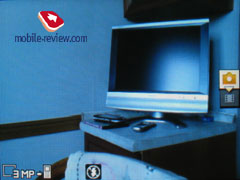
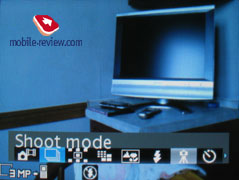
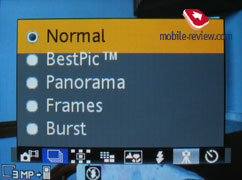
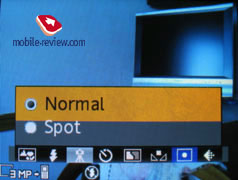
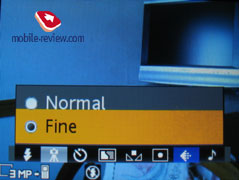

Scenes Ц Auto, Twilight landscape, twilight portrait, Landscape, Portrait, Beach/Snow, Sports, Document. Settings are interesting in case the phone is unable to give you satisfying quality in automatic mode, this happens rarely and as a result these settings will be used with same rareness.
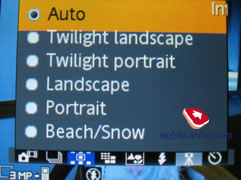
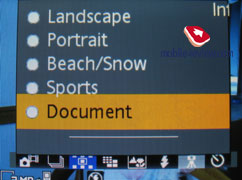
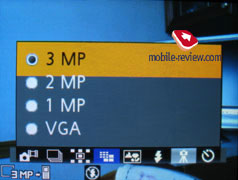

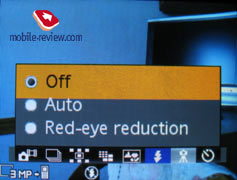
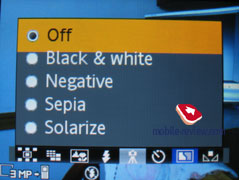
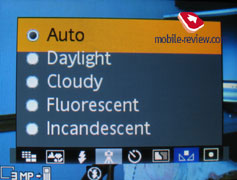
Focus Ц auto, macro, infinite. You cannot disable Autofocus.
Flash Ц automatic mode, red-eye correction enabled/disabled. ItТs impossible to force flash usage whenever you wish to.
Special Effects Ц everything is pretty common, Black&White, Negative, Sepia, Solarize.
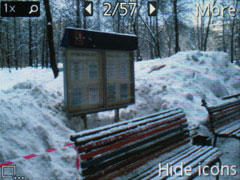
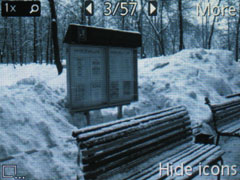
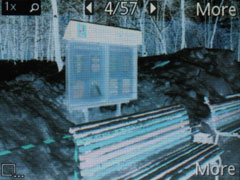

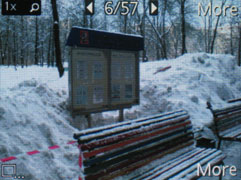
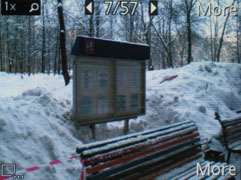
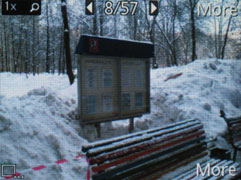
White balance Ц Automatic, Daylight, Cloudy, Fluorescent, Incandescent
Metering Ц Normal metering, dot metering
ISO level setting is not present, neither settings for used image stabilizer. It gets activated only in one case Ц when you are in Document mode. LetТs look at the photos taken by this phone and compare them with photos taken by Sony Ericsson K750i, because of lack of available analogues. K750i had latest firmware. NokiaТs N80 prototype had poor camera quality, there was no reason to include this device in our test at this development stage. Unfortunately we did not have Sharp 903 at our disposal.
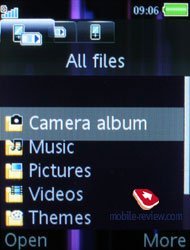
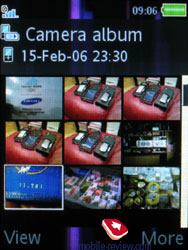
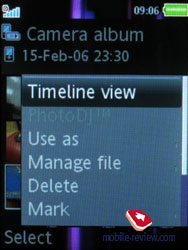
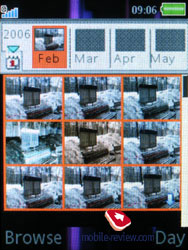
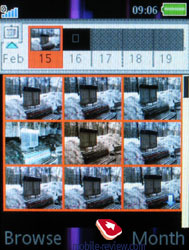
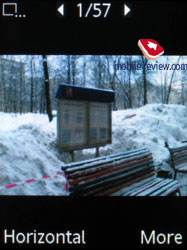
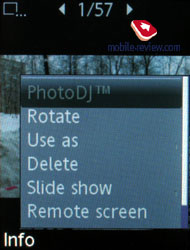


SFX was the first what we wanted to test out and finish with, there is no big reason to use the same effects in the additional photo-editor which is present.
Snowy weather in Moscow predisposes to take photos of snowflakes, here macro mode is required. You can see for yourself that the snowflakes are clearly seen on the screen and they are really detailed and sharp. This is very good macro mode realization, it should be praised.
|
|
 |
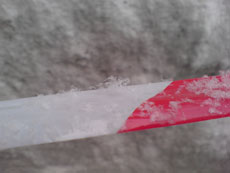 |
(+)
увеличить, 2048x1536, JPEG |
(+)
увеличить, 2048x1536, JPEG |
 |
 |
(+)
увеличить, 2048x1536, JPEG |
(+)
увеличить, 2048x1536, JPEG |
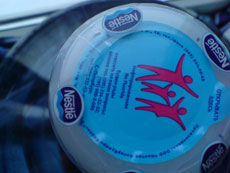 |
 |
(+)
увеличить, 2048x1536, JPEG |
(+)
увеличить, 2048x1536, JPEG |
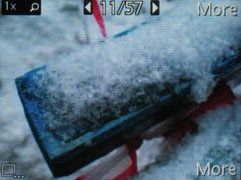
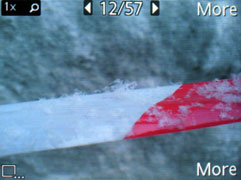
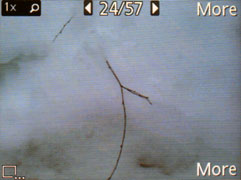
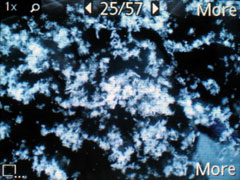
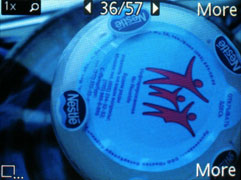
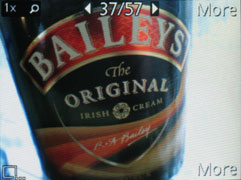
In inifinite focusing mode far wall of the house behind the park should be seen, viewer should also see separate bricks. The camera passed this test, you can see that for yourself:
Here is a list of photos shown as examples, they were taken in standard modes and compared with Sony Ericsson K750i. I think you can rate the overall quality of the camera:
|
|
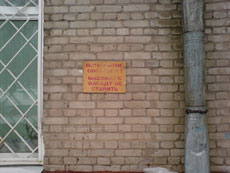 |
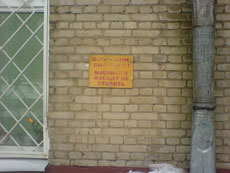 |
(+)
увеличить, 2048x1536, JPEG |
(+)
увеличить, 1280x1024, JPEG |
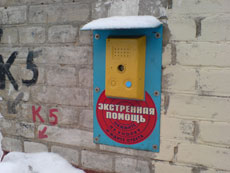 |
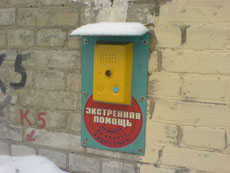 |
(+)
увеличить, 2048x1536, JPEG |
(+)
увеличить, 1280x1024, JPEG |
 |
 |
(+)
увеличить, 2048x1536, JPEG |
(+)
увеличить, 1280x1024, JPEG |
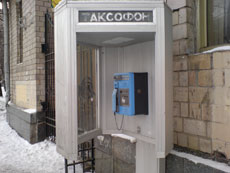 |
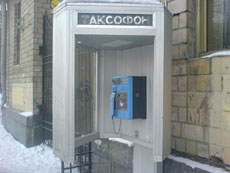 |
(+)
увеличить, 2048x1536, JPEG |
(+)
увеличить, 1280x1024, JPEG |
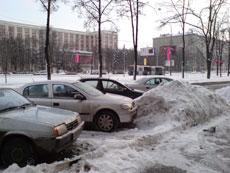 |
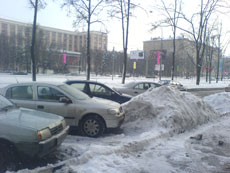 |
(+)
увеличить, 2048x1536, JPEG |
(+)
увеличить, 1280x1024, JPEG |
 |
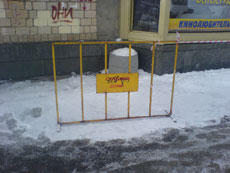 |
(+)
увеличить, 2048x1536, JPEG |
(+)
увеличить, 1280x1024, JPEG |
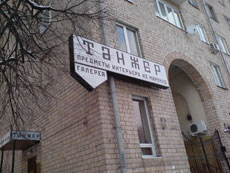 |
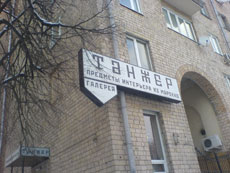 |
(+)
увеличить, 2048x1536, JPEG |
(+)
увеличить, 1280x1024, JPEG |
 |
 |
(+)
увеличить, 2048x1536, JPEG |
(+)
увеличить, 1280x1024, JPEG |
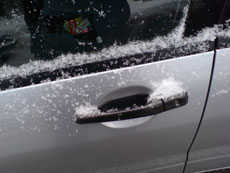 |
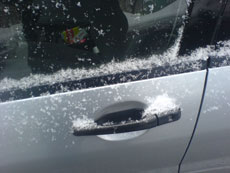 |
(+)
увеличить, 2048x1536, JPEG |
(+)
увеличить, 1280x1024, JPEG |
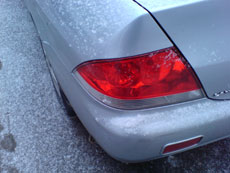 |
 |
(+)
увеличить, 2048x1536, JPEG |
(+)
увеличить, 1280x1024, JPEG |
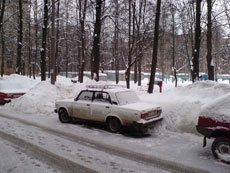 |
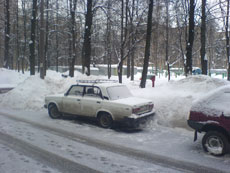 |
(+)
увеличить, 2048x1536, JPEG |
(+)
увеличить, 1280x1024, JPEG |
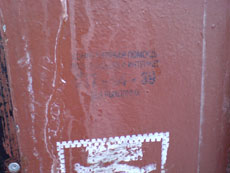 |
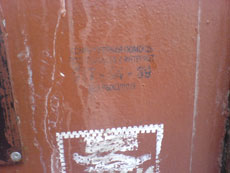 |
(+)
увеличить, 2048x1536, JPEG |
(+)
увеличить, 1280x1024, JPEG |
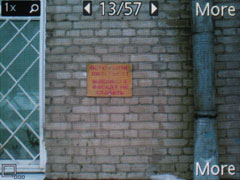
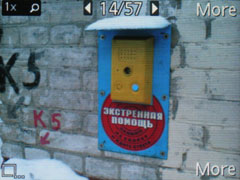

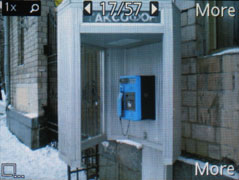
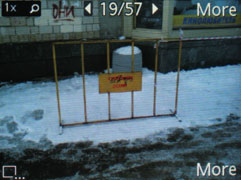

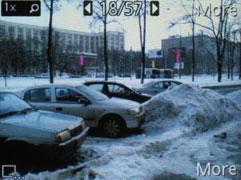
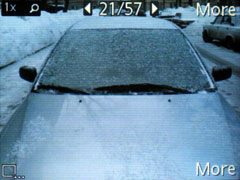
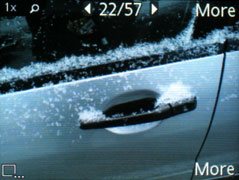
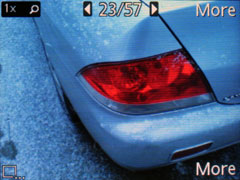
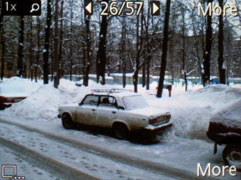
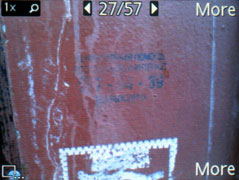
I intentionally skipped the flash while describing the phoneТs functionality, actually itТs not an ordinary LED used in most phones on todayТs market, itТs full-fledged impulsive xenon flash. One of the obvious disadvantages is the spot light that will reveal itself when photos of objects located close to the phone are taken. You can clearly see that on the examples below. We decided not to indulge for this phone, test shots were made in complete darkness, but you should note that the flash works only when you press the shutter, pilot backlight and distance metering are done with the help of IR-sensor. At the same time K750iТs focusing is done with constantly enabled backlight.
|
|
 |
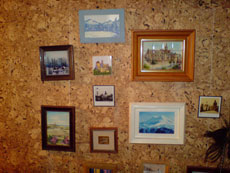 |
(+)
увеличить, 2048x1536, JPEG |
(+)
увеличить, 2048x1536, JPEG |
 |
 |
(+)
увеличить, 2048x1536, JPEG |
(+)
увеличить, 2048x1536, JPEG |
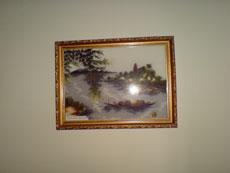 |
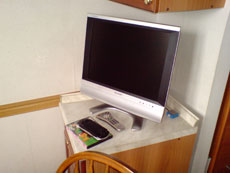 |
(+)
увеличить, 2048x1536, JPEG |
(+)
увеличить, 2048x1536, JPEG |
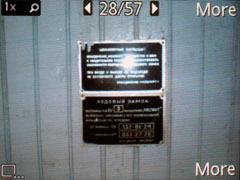
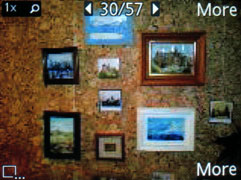



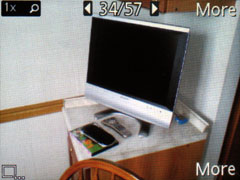
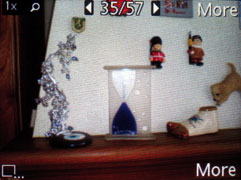
The quality of the photo taken with flash will be worse than the quality of photo taken during daylight, but it is nicely saturated and looks great overall. In case you are in desperate need of taking shot in full darkness K800Тs camera will do fine. In city lighting conditions automatic flash will lead to slightly yellow shade for all photos, for both lamps and snow. Perhaps itТs subjective perception that interrupts into objective judging, when your senses fit all objects to the gamma you are used to, which partly makes snow whiter than it actually is. In any case, itТs a matter of choice, photos of same locations taken without flash look more natural. However the exposure time increases in case the flash is disabled, and it is almost impossible to hold the phone steadily without the tripod, your hand is literally shaking and as a result you get blurry shots.
|
|
 |
 |
(+)
увеличить, 2048x1536, JPEG |
(+)
увеличить, 2048x1536, JPEG |
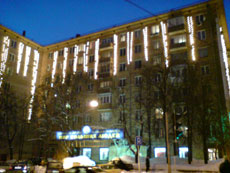 |
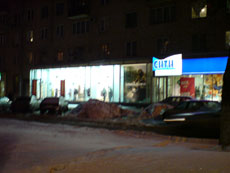 |
(+)
увеличить, 2048x1536, JPEG |
(+)
увеличить, 2048x1536, JPEG |
 |
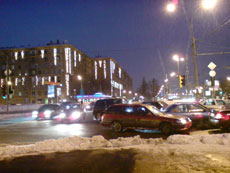 |
(+)
увеличить, 2048x1536, JPEG |
(+)
увеличить, 2048x1536, JPEG |

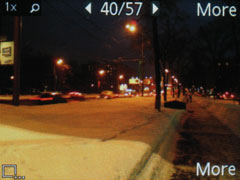
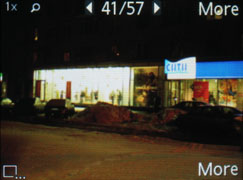
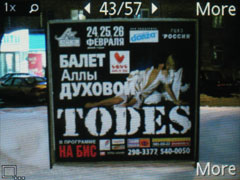
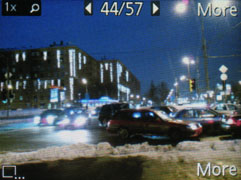
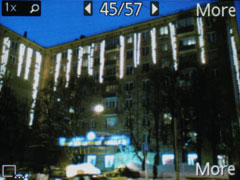
One of the document mode examples is not the best one in terms of quality, the distance was approximately 25-30cm. Unfortunately after I made a series of shots, I became terrified after few days because I realized that I was taking photos of highly confidential documents, thatТs why I had to drop out those shots from the review.
Vide recording supports same set of effects as for the camera. There is only one available resolution which is 176x144 pixels at 15 fps rate. Such low resolution is implemented only because SE plans launching another brand for additional set of products targeted for making great photos combined with video recording in HD-quality.
The summary that can be done so far is simple and obvious. At the movement there is no other phone that could match K800, which would use the same amount of technologies as this module does. But technologies and their patented titles are just empty phrase for appropriate user, who concentrates his attention on the picture quality, not the process the photo is made. The quality in this model is acceptable, photos taken outdoors in high resolution during sunny day can be used as wallpapers for laptops, sent to friends and so on. The photos look very decent on the phoneТs screen in most cases, same can be said when they are viewed at desktop pc. Considering the fact that this model should be based on photographic constituent, it has improved version of the gallery, but we shall speak about this in the 4th part of the review. One of the clear disadvantages for this model is video recording, the possibilities are poor, in case this function is your number one priority itТs better to look for some other product instead. This model will not have any direct competitors in its form-factor by camera quality in the nearest 8-11 months after it will be released. We can see situation that already happened with Sony Ericsson K750i making its comeback.
You can see additional examples of photos made by this phone, there are plenty of them:
Camera, videoclip (wmv, 10,7 ћб)
|
|
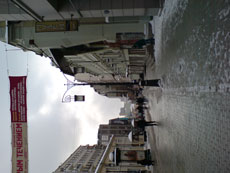 |
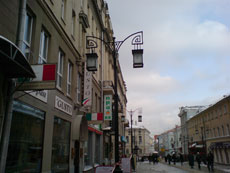 |
(+)
увеличить, 2048x1536, JPEG |
(+)
увеличить, 2048x1536, JPEG |
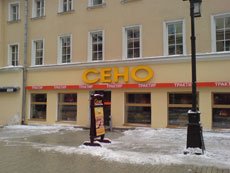 |
 |
(+)
увеличить, 2048x1536, JPEG |
(+)
увеличить, 2048x1536, JPEG |
 |
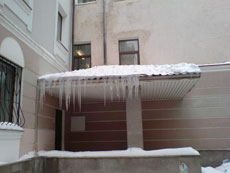 |
(+)
увеличить, 2048x1536, JPEG |
(+)
увеличить, 2048x1536, JPEG |
 |
 |
(+)
увеличить, 2048x1536, JPEG |
(+)
увеличить, 2048x1536, JPEG |
 |
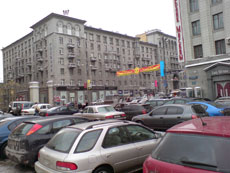 |
(+)
увеличить, 2048x1536, JPEG |
(+)
увеличить, 2048x1536, JPEG |
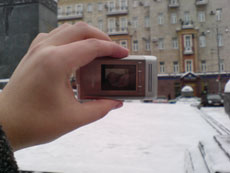 |
 |
(+)
увеличить, 2048x1536, JPEG |
(+)
увеличить, 2048x1536, JPEG |
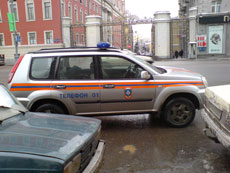 |
 |
(+)
увеличить, 2048x1536, JPEG |
(+)
увеличить, 2048x1536, JPEG |
Review
of GSM(UMTS) phones Sony Ericsson K790/K800 Part 4, or WhatТs new
in interface?>>>
Eldar Murtazin (eldar@mobile-review.com)
Translated by Alexander "Lexx" Zavoloka (alexander.zavoloka@mobile-review.com)
Published — 28 February 2006
Have something to add?! Write us... eldar@mobile-review.com
|
News:
[ 31-07 16:21 ]Sir Jony Ive: Apple Isn't In It For The Money
[ 31-07 13:34 ]Video: Nokia Designer Interviews
[ 31-07 13:10 ]RIM To Layoff 3,000 More Employees
[ 30-07 20:59 ]Video: iPhone 5 Housing Shown Off
[ 30-07 19:12 ]Android Fortunes Decline In U.S.
[ 25-07 16:18 ]Why Apple Is Suing Samsung?
[ 25-07 15:53 ]A Few Choice Quotes About Apple ... By Samsung
[ 23-07 20:25 ]Russian iOS Hacker Calls It A Day
[ 23-07 17:40 ]Video: It's Still Not Out, But Galaxy Note 10.1 Gets An Ad
[ 19-07 19:10 ]Another Loss For Nokia: $1 Billion Down In Q2
[ 19-07 17:22 ]British Judge Orders Apple To Run Ads Saying Samsung Did Not Copy Them
[ 19-07 16:57 ]iPhone 5 To Feature Nano-SIM Cards
[ 18-07 14:20 ]What The iPad Could Have Looked Like ...
[ 18-07 13:25 ]App Store Hack Is Still Going Strong Despite Apple's Best Efforts
[ 13-07 12:34 ]Infographic: The (Hypothetical) Sale Of RIM
[ 13-07 11:10 ]Video: iPhone Hacker Makes In-App Purchases Free
[ 12-07 19:50 ]iPhone 5 Images Leak Again
[ 12-07 17:51 ]Android Takes 50%+ Of U.S. And Europe
[ 11-07 16:02 ]Apple Involved In 60% Of Patent Suits
[ 11-07 13:14 ]Video: Kindle Fire Gets A Jelly Bean
Subscribe
|





